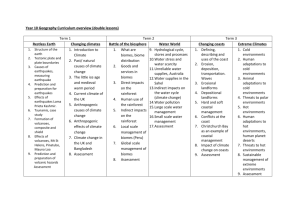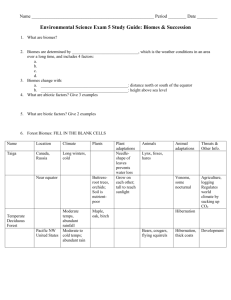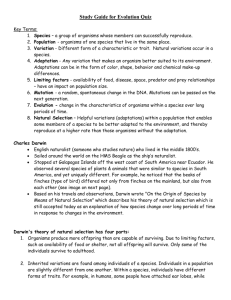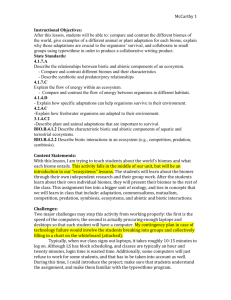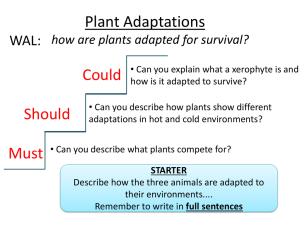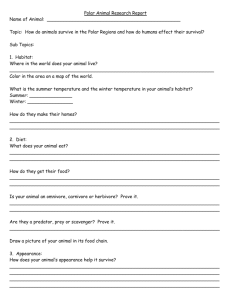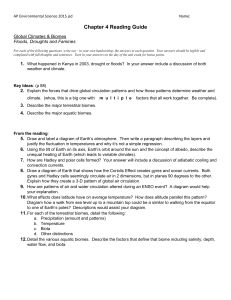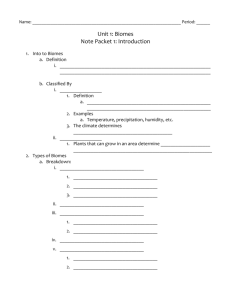Adaptations and Biomes Adaptations to an Environment Every
advertisement
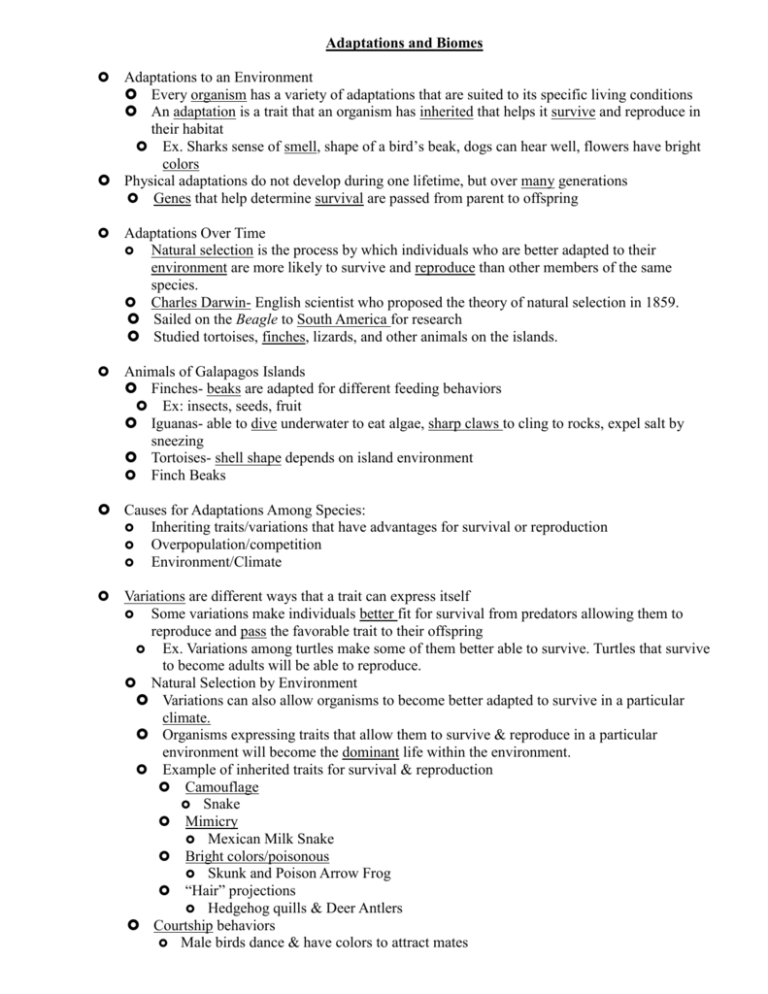
Adaptations and Biomes Adaptations to an Environment Every organism has a variety of adaptations that are suited to its specific living conditions An adaptation is a trait that an organism has inherited that helps it survive and reproduce in their habitat Ex. Sharks sense of smell, shape of a bird’s beak, dogs can hear well, flowers have bright colors Physical adaptations do not develop during one lifetime, but over many generations Genes that help determine survival are passed from parent to offspring Adaptations Over Time Natural selection is the process by which individuals who are better adapted to their environment are more likely to survive and reproduce than other members of the same species. Charles Darwin- English scientist who proposed the theory of natural selection in 1859. Sailed on the Beagle to South America for research Studied tortoises, finches, lizards, and other animals on the islands. Animals of Galapagos Islands Finches- beaks are adapted for different feeding behaviors Ex: insects, seeds, fruit Iguanas- able to dive underwater to eat algae, sharp claws to cling to rocks, expel salt by sneezing Tortoises- shell shape depends on island environment Finch Beaks Causes for Adaptations Among Species: Inheriting traits/variations that have advantages for survival or reproduction Overpopulation/competition Environment/Climate Variations are different ways that a trait can express itself Some variations make individuals better fit for survival from predators allowing them to reproduce and pass the favorable trait to their offspring Ex. Variations among turtles make some of them better able to survive. Turtles that survive to become adults will be able to reproduce. Natural Selection by Environment Variations can also allow organisms to become better adapted to survive in a particular climate. Organisms expressing traits that allow them to survive & reproduce in a particular environment will become the dominant life within the environment. Example of inherited traits for survival & reproduction Camouflage Snake Mimicry Mexican Milk Snake Bright colors/poisonous Skunk and Poison Arrow Frog “Hair” projections Hedgehog quills & Deer Antlers Courtship behaviors Male birds dance & have colors to attract mates Endangered/Extinctions Organisms that are not able to adapt to their environment could become endangered or extinct. Threatened- could become endangered in near future Endangered- at risk of extinction Extinct- a species with no surviving members Reasons for Extinctions Pollution Overhunting Habitat loss Introduced species- compete with native species Diseases Climate change- global warming Biomes are Large geographic areas characterized by a distinct climate and specific types of plant & animal life. Climate is the weather a place has over a long period of time (50 years). Biotic and Abiotic Factors Biotic factors- parts of the environment that are living Examples: trees, grass, animals Abiotic factors- the nonliving environment Examples: rocks, soil, air, water Identify three biotic and three abiotic factors in this picture. Taiga/Boreal Forest Biomes: Winters are cold and very snowy & Summers are warm and rainy enough to melt all the snow Dominant plants adapt with needle-shaped leaves to reduce water loss by having less surface area Ex. evergreens Animal have adapted by camouflage, hibernating or migrating, & thick fur Rain Forest Biomes: Wet, warm biomes that contain the greatest variety of life on earth Plant & animal life adapts in a variety of ways Camouflage Poisonous Mimicry Desert Biomes: Receive less than 25 cm of rain per year. Hottest temperature on Earth The plants have many adaptations for getting and conserving water. (deep roots, needles) Some animals have adapted by being nocturnal, burrowing under ground, & being hairless Aquatic Biomes Adaptations Bio luminance, webbed feet, slim lined body, gills,
